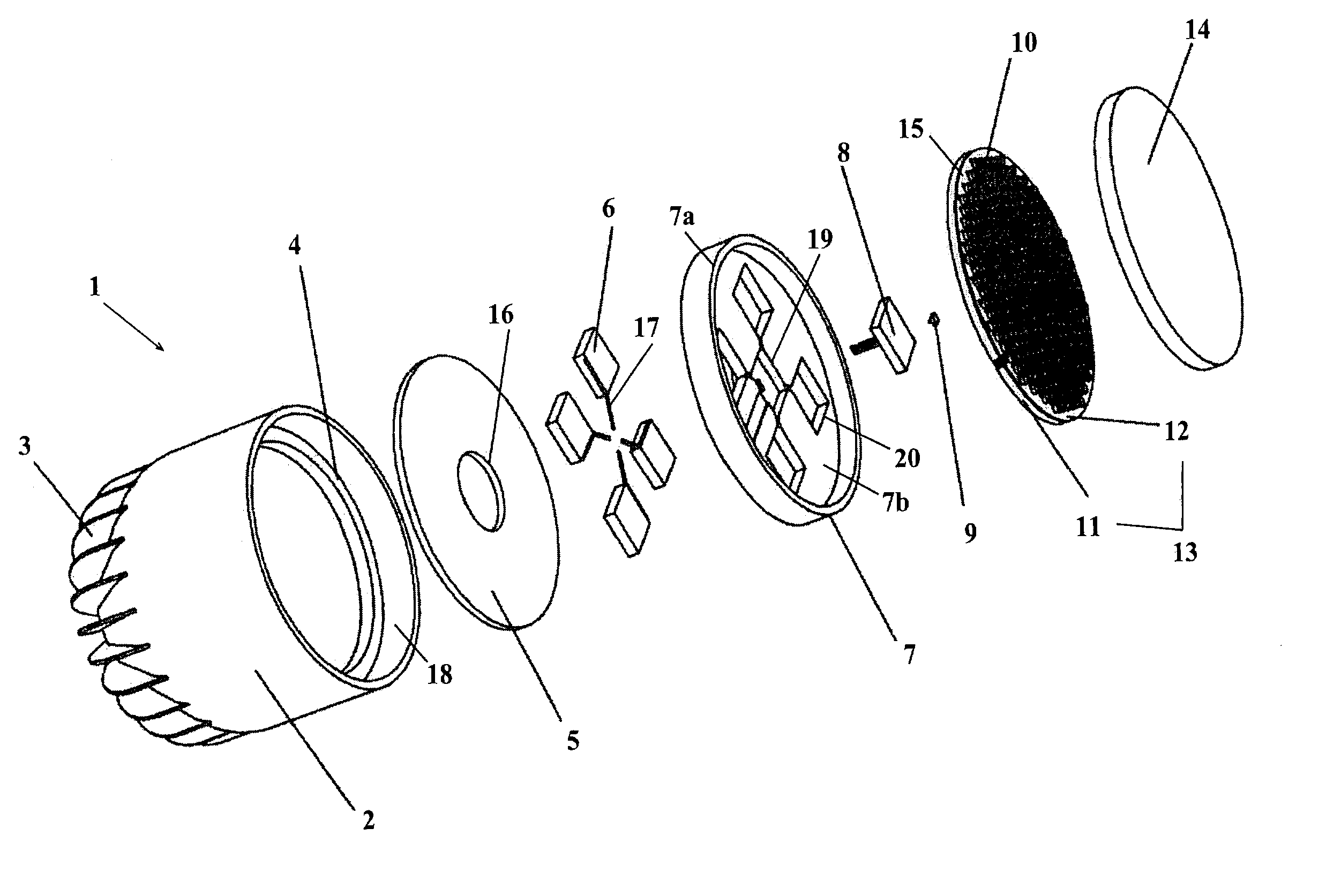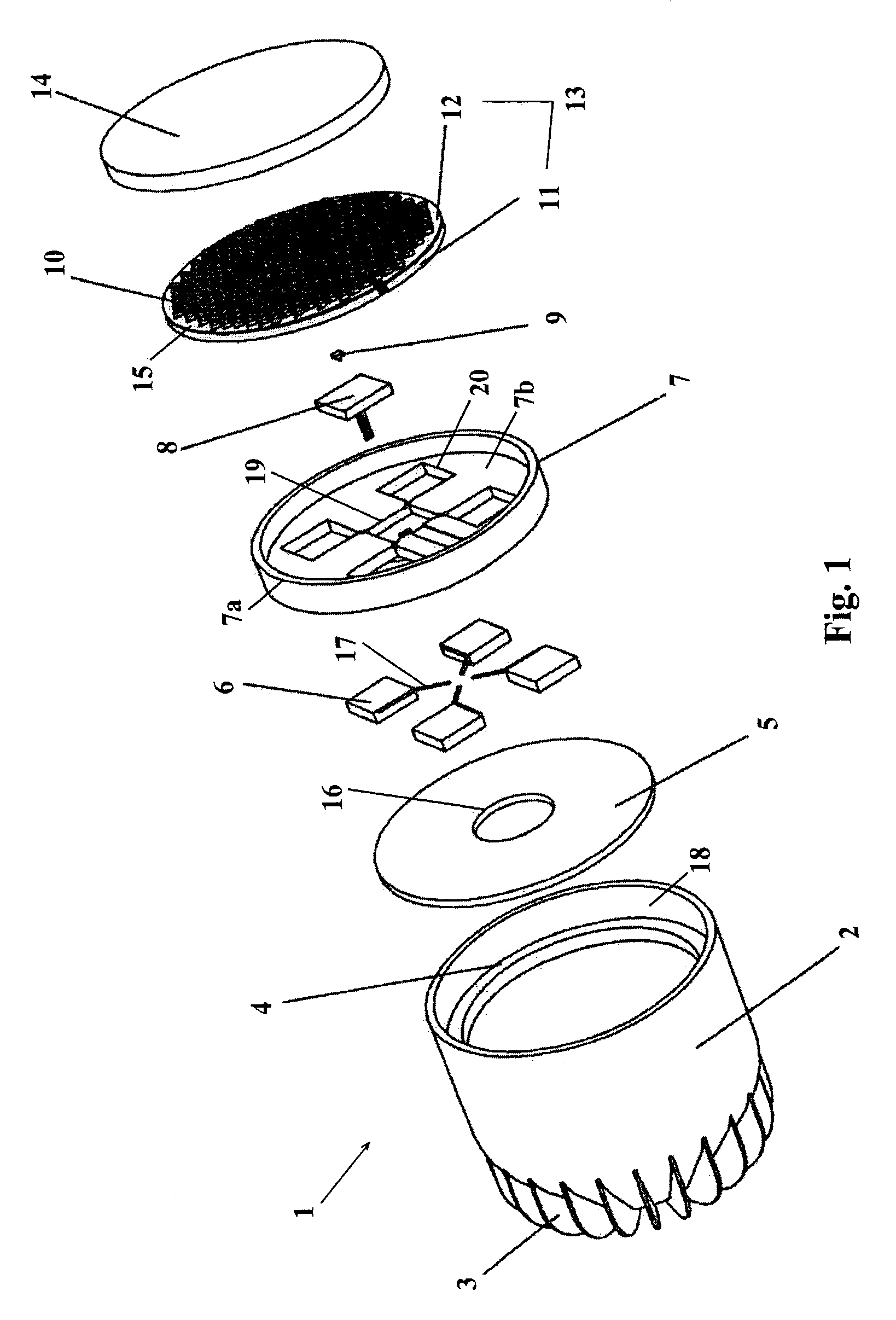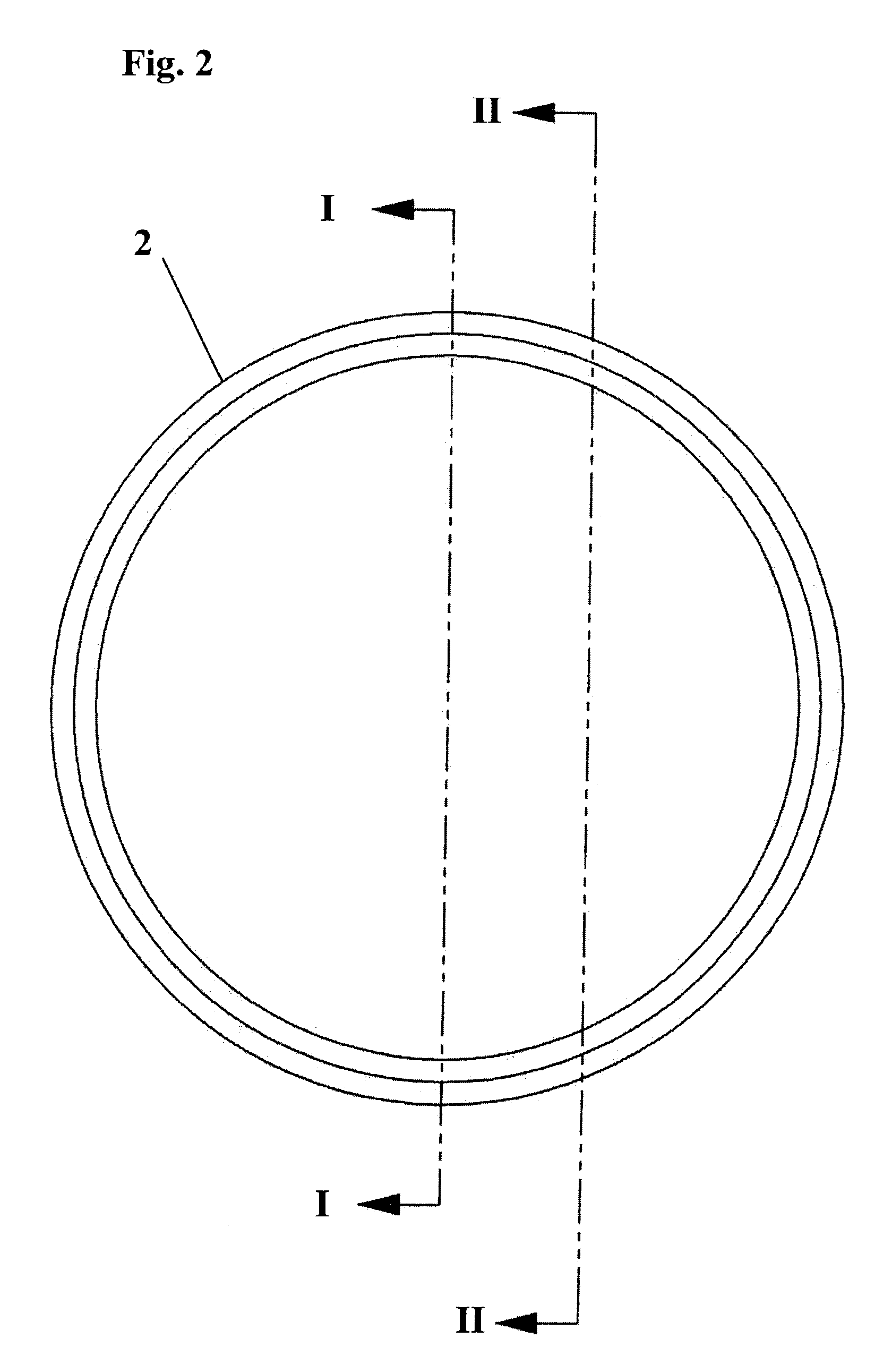Peltier-cooled LED lighting assembly
a technology of led lighting and cooling plate, which is applied in the direction of fixed installation, lighting and heating apparatus, lighting applications, etc., can solve the problems of reducing unit operation efficiency, affecting unit life span, and insufficient thermal transfer from led(s) to the housing to maintain a desirable led temperature, so as to prevent condensation
- Summary
- Abstract
- Description
- Claims
- Application Information
AI Technical Summary
Benefits of technology
Problems solved by technology
Method used
Image
Examples
Embodiment Construction
[0048]Referring now to FIG. 1, a lighting assembly 1 includes a cylindrically shaped housing 2 having a closed bottom end and an open top end. A plurality of fins 3 extend radially from the bottom end of housing 2 and aid in convective thermal transfer, as will be explained. A ring shaped mounting surface 4 extends continuously around an inner surface 18 at the top end of housing 2.
[0049]Housing 2 may be formed from any material suitable for a desired application including plastics and metals such as aluminum and steel. Housing 2 may additionally include brackets, threaded holes, or connection surfaces useful in mounting lighting assembly 1 to an external structure (not shown). Alternative embodiments to the present invention envision additional structures on housing 2 for speedy removal of thermal energy, including vents, liquid cooling structures, forced air structures, and fans (all not shown).
[0050]During assembly, a heat sink plate 5 seals tightly to mounting surface 4 and prov...
PUM
 Login to View More
Login to View More Abstract
Description
Claims
Application Information
 Login to View More
Login to View More - R&D
- Intellectual Property
- Life Sciences
- Materials
- Tech Scout
- Unparalleled Data Quality
- Higher Quality Content
- 60% Fewer Hallucinations
Browse by: Latest US Patents, China's latest patents, Technical Efficacy Thesaurus, Application Domain, Technology Topic, Popular Technical Reports.
© 2025 PatSnap. All rights reserved.Legal|Privacy policy|Modern Slavery Act Transparency Statement|Sitemap|About US| Contact US: help@patsnap.com



